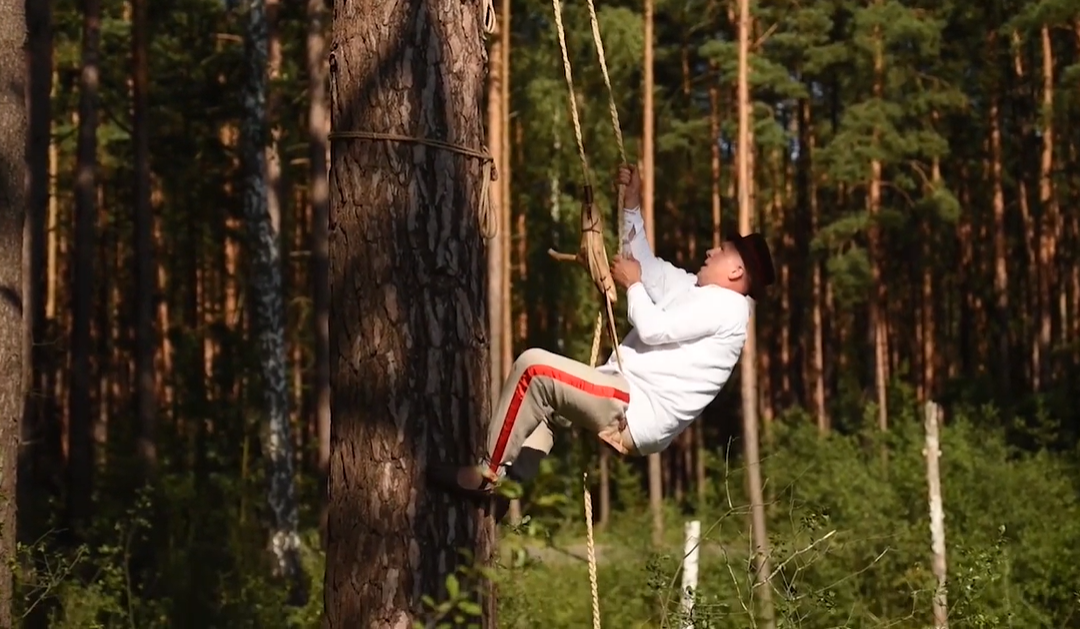The tree beekeeping culture of Poland and Belarus has been added to UNESCO’s list of the Intangible Cultural Heritage of Humanity. It becomes the second Polish tradition recognised by the UN agency, and takes its place on the list alongside the likes of Cuban Rumba and Chinese calligraphy.
The practice of tree beekeeping, records of which date back to the 13th century, seeks to create natural living conditions for the bees in tree and log hives, with as little human interference as possible. Hives are often deliberately located in hard-to-access places to keep them isolated.
According to UNESCO, tree beekeeping culture is based on knowledge acquired through lifelong contact directly with the bees and their environment, and is traditionally passed on within families. It also includes an array of culinary and medicinal traditions.
“Tree beekeeping fosters a sense of community belonging and a shared awareness of our responsibility towards the environment,” according to a statement by the organisation.
The Belarusian foreign ministry hailed the recognition as the result of cooperation between the culture ministries of Belarus and Poland, local beekeeping communities on both sides of the border, and UNESCO, reports Belta, Belarus’s state-owned news agency.
UNESCO has up till now only recognised one other piece of Polish intangible heritage: the annual tradition in Kraków of making models of nativity scenes (known in Polish as szopki krakowskie).
The practice, which dates to the 19th century, sees craftsmen and amateurs compete every year to create miniature constructions that embed the nativity scene within features of Kraków’s architecture.
The works often have references to social and historical events – this year, inevitably, many figurines wore facemasks. In early December, the competition jury met online and the best works will now be displayed in hospitals around the city, rather than being shuttled off for travelling exhibitions as was the custom in past years.
The 78th edition of Kraków's annual "szopki" contest – a UNESCO-listed tradition in which participants create models of the nativity scene featuring elements of the city's architecture – has begun
Many of this year's entries make reference to the pandemic https://t.co/JziHAY33jO
— Notes from Poland 🇵🇱 (@notesfrompoland) December 2, 2020
UNESCO has also included 16 places in Poland on its list of World Heritage Sites. The first to be recognised, in 1978, were Kraków’s historic city centre and the nearby Wieliczka salt mine, which dates back to the 13th century.
They were joined the following year by the former German Nazi concentration and extermination camp of Auschwitz and by Białowieża Forest, which straddles the border with Belarus and is one of the last remants of the primeval forests that once covered much of Europe.
The remaining Polish sites on the UNESCO World Heritage list are: the historic centres of Warsaw, Toruń and Zamość; Malbork Castle; the Churches of Peace in Jawor and Świdnica; the wooden churches of southern Lesser Poland and Carpathia; Kalwaria Zebrzydowska and Muskau/Mużakowski parks; Centennial Hall in Wrocław; and, the two most recent additions, historic mines in Tarnowskie Góry and near Ostrowiec.
Poland's Krzemionki prehistoric mine complex was today added to @UNESCO's World Heritage List.
Flint was first mined there almost 6,000 years ago but the mines were abandoned by around 1600 BC and only rediscovered by a Polish geologist in 1922 https://t.co/nERoNcDwfI
— Notes from Poland 🇵🇱 (@notesfrompoland) July 6, 2019
Main image credit: UNESCO/YouTube (screenshot)

Maria Wilczek is deputy editor of Notes from Poland. She is a regular writer for The Times, The Economist and Al Jazeera English, and has also featured in Foreign Policy, Politico Europe, The Spectator and Gazeta Wyborcza.




















